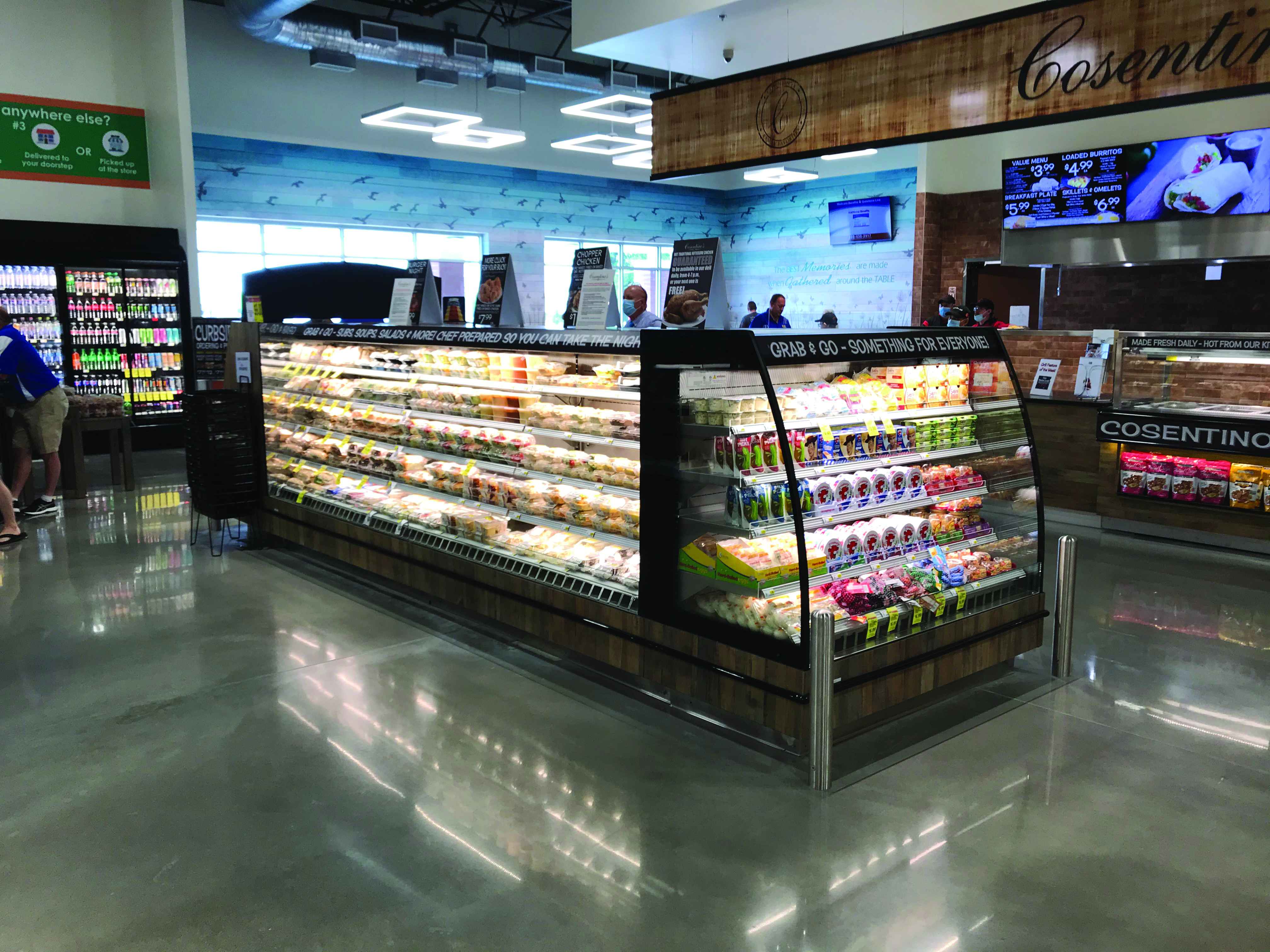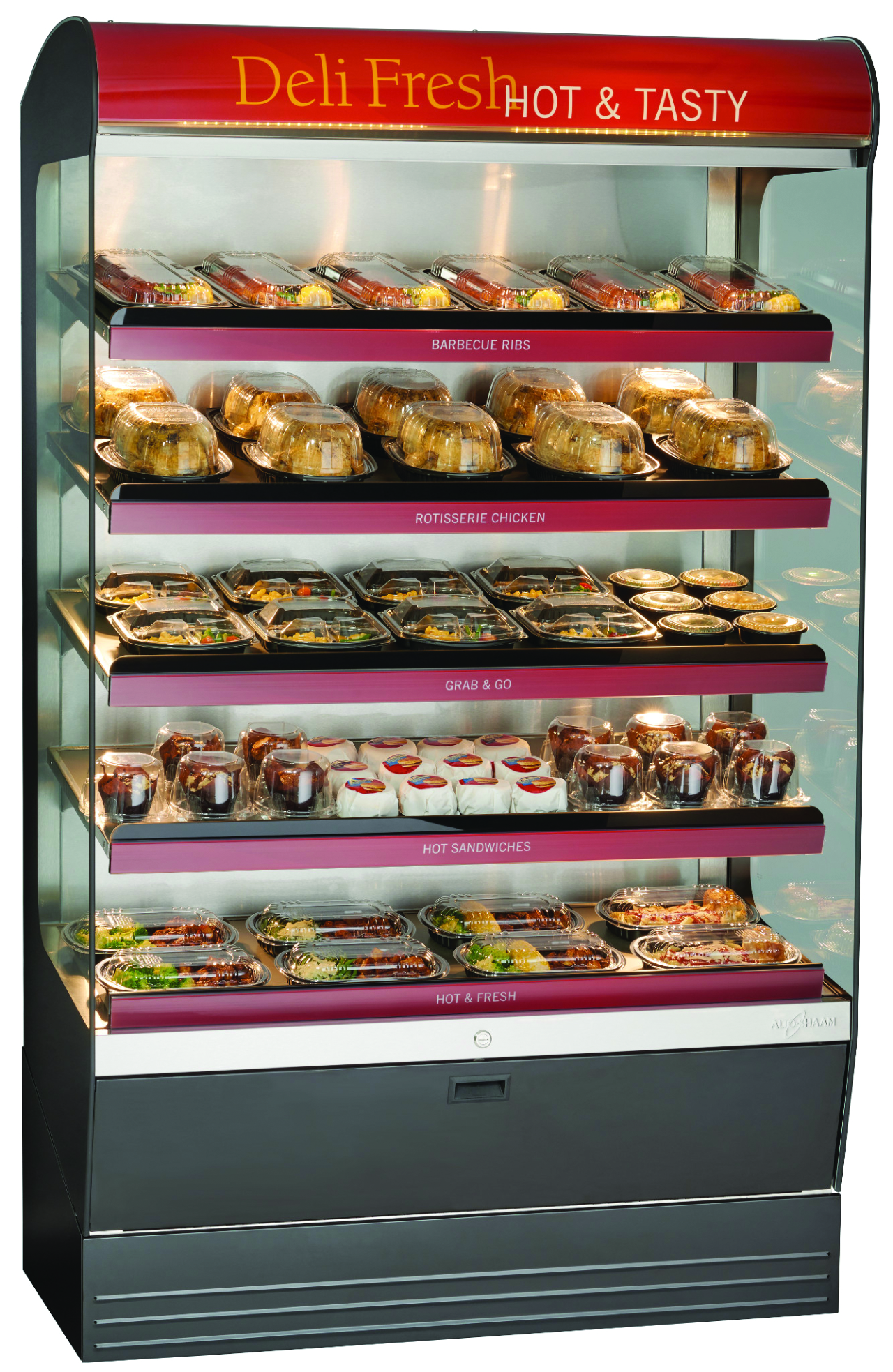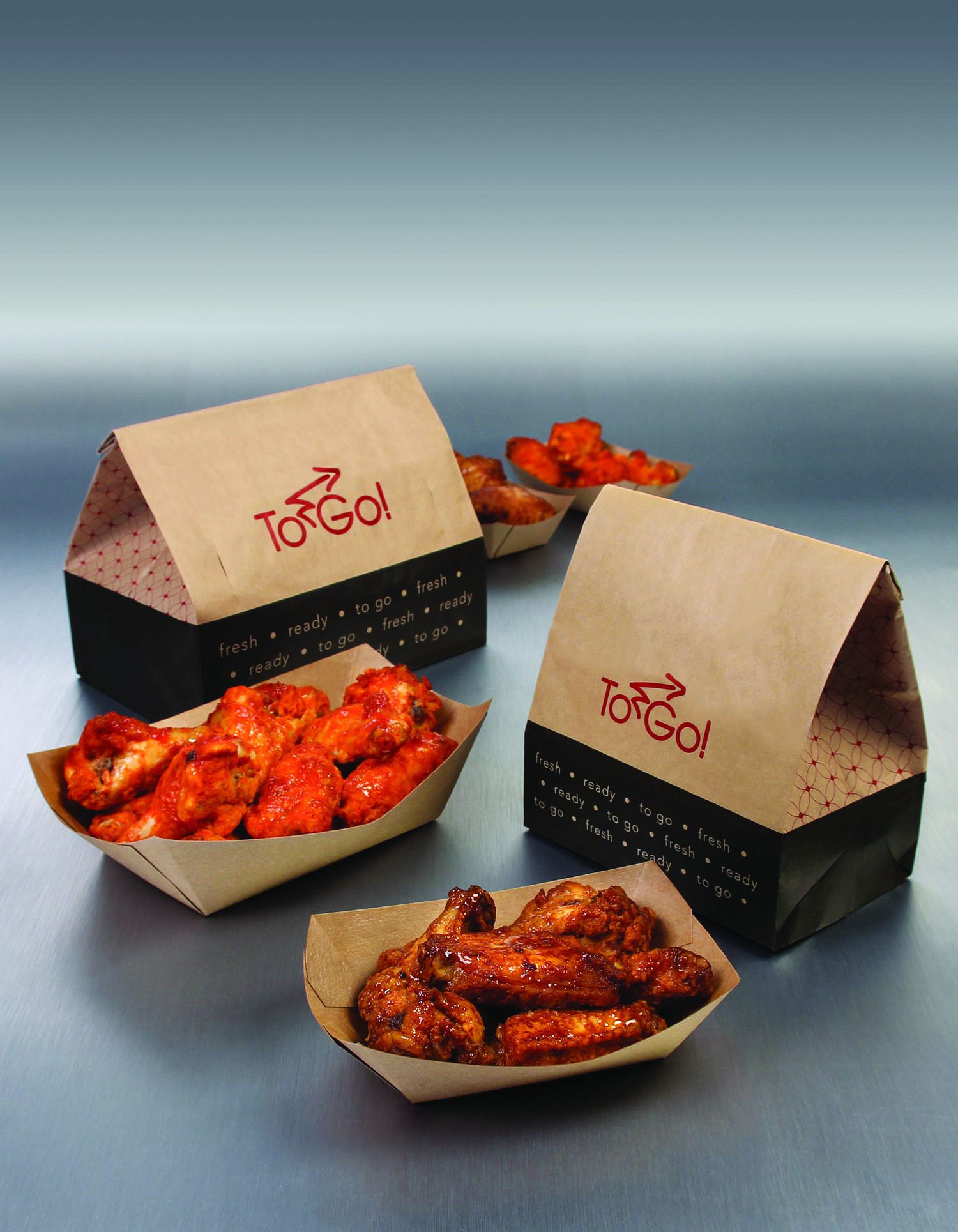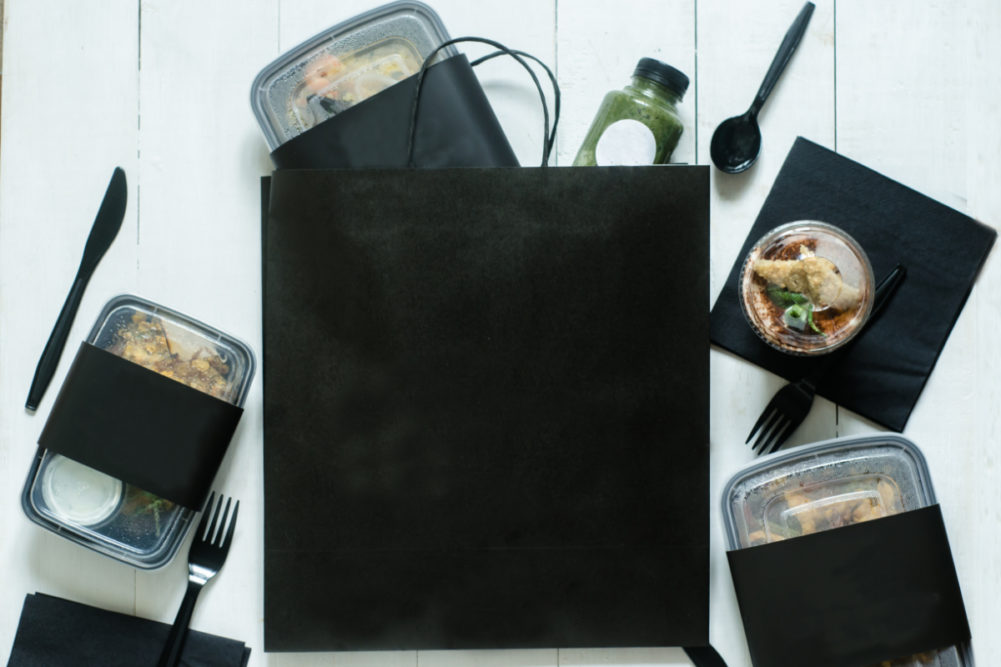KANSAS CITY, MO. - After months of unpredictability in sales projections for upcoming weeks in most perimeter departments and grocery categories, a pattern is starting to emerge that is beginning to look like the ‘new normal.’
From the week ending on July 28 to the week ending on Aug. 16 fresh perimeter sales overall ranged from a consistent 10% to 13% above dollar sales over the same time period in 2019, according to data collected by IRI and analyzed by 210 Analytics.
While most perimeter departments have seen increased dollar sales, the instore deli has been struggling since the onset of the pandemic. From July 5 to Aug. 16, the instore deli came in between 9% to 11% under 2019 sales. Suffering the most has been the deli-prepared, grocery foodservice category with sales losses falling between 19% to 24% over the seven weeks leading up to Aug. 16. At its worst, the category was 47% behind 2019 sales the week ending on April 5.
With COVID-19 expected to be the new norm for the foreseeable future, retailers are left to figure out how to begin recovering lost sales in what was once the most revenue-producing grocery category. In 2019 deli-prepared foods made up a $12.6 billion portion of the grocery industry’s revenue stream in the United States.
It’s time to rethink salad and hot bars
Grocers are missing out on the largest amount of foodservice sales from the closure of self-serve hot and cold bars. Hot and cold bars are a big expense to place and a big expense to rip out, but they take up a lot of space that for the foreseeable future is not being used to its greatest advantage.
Some retailers have come up with a plan for the interim with solutions that include turning the bars into coolers and warmers for pre-packaged food or reopening the bars with an employee dishing, packaging and sealing food customers order. Neither of those options are necessarily perfect solutions — a portion of consumers are still hesitant about ordering made-to-order foods over pre-packaged and as Bridgeton, Mo.-based Hussmann Corporation’s business development manager Francie Jenks pointed out, using hot and cold bars to house grab-and-go selections is less than ideal for presentation.
“The conse nsus is that it’s going to be quite a while until there’s a vaccine for the virus, but people may still be gun-shy just because of all of the common touch areas on self-service,” Jenks said. “The other thing is retailers are losing so much money by not having those (hot and cold bars) fully operational. It depends on their (individual retailers’) tolerance, but in many cases with the amount of money grocers are losing out on by having those bars closed, new fixtures would pay for themselves very quickly.”
nsus is that it’s going to be quite a while until there’s a vaccine for the virus, but people may still be gun-shy just because of all of the common touch areas on self-service,” Jenks said. “The other thing is retailers are losing so much money by not having those (hot and cold bars) fully operational. It depends on their (individual retailers’) tolerance, but in many cases with the amount of money grocers are losing out on by having those bars closed, new fixtures would pay for themselves very quickly.”
To go in place of the salad and hot bars, Jenks recommends either placing multi-deck islands or self-contained mobile cases that would allow retailers to showcase grab-and-go items in a visible area that can draw in shoppers. Hussmann has dozens of solutions grocers can choose from, depending on what would best fit their needs.
Jenks pointed out the company’s multi-deck islands and mobile-case merchandisers because those are the products seeing the largest growth in demand since the onset of COVID-19.
“Mobile cases are selling the most because those can be used as spot merchandisers and can be moved around the store as well,” she said. “They’re self-contained and you don’t have to worry about refrigeration lines.”
If grocers replace self-serve bars with the mobile cases, that also provides an opportunity for retailers to store their salad and hot bars and bring them back to the floor if desire for self-serve returns to post-COVID levels. The mobile cases can then be placed elsewhere in the store to drive impulse purchases.
Evaluate food programs to offer convenience, add variety
According to a new report from Acosta, more than half of consumers (55%) are eating at home more as a result of COVID-19. But not all of them are enjoying the change — a quarter of shoppers say they are sick of eating at home. This provides an excellent opportunity for the grocery store deli to offer solutions for those not wanting to cook themselves.
The key to meeting those needs is doing a deep dive to pinpoint exactly what a retailer’s customer base is going to respond best to, noted Greg West, senior vice president of marketing for Beloit, Wis.-based Broaster Company.
“Go through the basics,” West said. “Understand the menu and items offered; does it meet the needs of your customers? It is true that the resurgence of comfort foods is real; households are looking for meal solutions. There is a huge demand due to the closures of dining rooms or consumers nervous about dining at their favorite restaurant.”
Retailers need to find a way make themselves stand out, pointed out Tami Olson, director of national accounts – retail for Menomonee Falls, Wis.-based Alto-Shaam. Now is the time for retailers to offer new things that appeal to customers tiring of cooking at home and looking for new, restaurant-quality options.

The foodservice solutions company recently held a webinar that taught retailers how to create new foodservice programs, while eliminating waste from other sections of the store.
“For instance if they have, in the meat department, some salmon that is getting close to its sell-by date, instead of throwing it away, there’s an opportunity to smoke it and offer it as a meal solution,” Olson said. “So, think about what programs you can be doing to eliminate waste and then also be able to offer the things that have never been offered in the past.”
Alto-Shaam can offer retailers a variety of ovens and merchandisers to help retailers make the most out any food program. Olson suggested using the company’s end-cap shelves to help drive impulse purchases at the front of the store.
The company’s end caps are available in 24-, 36- and 48-inch sizes with the options to put in three to five shelves. Each shelf can be individually controlled so retailers can place a variety of products without worrying about them all requiring the exact same heating or cooling needs.
“Instead of having a customer go all the way over to the deli or prepared area, put in a grab-and-go case right by the check-out so that’s another impulse buy opportunity,” Olson said.
West suggested that retailers invest in training, upgrading equipment and refreshing branding to strengthen the look and quality of food programs offered to customers. Due to the pandemic, easing customer concern is a top priority, and West noted that retailers can help shoppers feel safe by using labels with callouts such as, “Kitchen Sealed for Freshness.”
In addition to kitchen equipment such as state-of-the-art pressure fryers, Broaster can help retailers implement a variety of food programs. The company’s most popular program is Genuine Broaster Chicken, which allows grocers to offer restaurant-quality chicken from the instore deli.
“We offer proven trademark food programs, or we can develop a program based on your specific menu strategy,” West said. “We truly care about the operator’s success. We are not just here to sell a piece of equipment, we are here to be a partner.”
Take advantage of eCommerce
Before COVID-19, Port Washington, NY-based NPD Group’s research showed that 19% of Americans had purchased groceries online in the last three months. By May that number had more than doubled to 40%, and online grocery shopping is expected to continue accelerating.
“We’ve probably leapt five years ahead into the future in a very short period of time,” said David Portalatin, vice president and industry adviser for The NPD Group.
Over the last few months, many retailers across the United States have added some type of online shopping capability to their grocery stores. The first place to start building an eCommerce store is usually center-store and then gradually expanding to fresh departments and then foodservice meals.
Prepared meal items have experienced a rapid increase in online ordering over the last few months, according to data collected by Toronto-based eCommerce solutions company Mercatus. Since March 2020, online grocery orders for prepared pizza have increased by 77%, party platters by 51% and deli sandwiches by 73% — that level of increase indicates that prepared meals are a fast-growing category, as purchasing groceries online becomes a lasting habit for shoppers.

“The online shift is continuing to increase,” said Mark Fairhurst, vice president of marketing for Mercatus. “I think the opportunity for grocery retailers to hang on to the audience who has shifted their buying pattern from restaurant to at-home is doubling down on meal prep solution capability and having it built into the eCommerce experience.”
Mercatus can help grocers build their eCommerce platforms from the ground up or add foodservice and other capabilities to existing platforms. Through Mercatus’ technology solutions, retailers can build meal prep tools, foodservice combo tools, and curbside or delivery options into their online offerings. Fairhurst also pointed that retailers can have success by partnering up with third-party delivery services such as Doordash to increase online orders.
Fairhurst said the company’s eCommerce solutions can be built with an algorithm that learns personalized online and instore behaviors of individual shoppers and target them with ads that model their interests and can help drive those impulse purchases online too.
To help retailers make online order pickup simple, Hussmann recently released refrigerated and dry smart locker kiosks where retailers can place customer orders and store at the proper temperature until the shopper can come to the kiosk, punch in their order code and pick up their foodservice and grocery items.
“It works for everything,” Jenks said. “Somebody simply places their online order and they go to locker and pick it up. So, it increases the speed of pickup quite a bit.”
Proper packaging makes all the difference
With made-to-order items going out, and grab-and-go items coming in, the proper packaging does a lot to encourage consumers to purchase pre-made foodservice items. When it comes to presentation, clear, visible packaging is vital in driving impulse purchases and the proper temperature, texture and freshness can convince consumers to try the product again or look elsewhere for meal solutions.
“Shoppers continue to look for convenient solutions to accommodate busy lifestyles,” said Marilyn  Stapleton, director of marketing for St. Louis-based Anchor Packaging. “Providing polypropylene containers that are safe to 230° under heat lamps and in hot displays optimize hot foods to go. This same package allows the consumer to purchase a chilled, ready-to-reheat in the microwave meal from the cold case.”
Stapleton, director of marketing for St. Louis-based Anchor Packaging. “Providing polypropylene containers that are safe to 230° under heat lamps and in hot displays optimize hot foods to go. This same package allows the consumer to purchase a chilled, ready-to-reheat in the microwave meal from the cold case.”
“For cold or ambient temperature foods that do not require reheat, retailers should look to crystal clear PETE containers,” Stapleton continued. “Sales of salads, cut fruit, desserts, baked goods, and much more displayed in a clear package or with a black base and clear lid, will flourish with this ‘just made’ fresh appearance.”
Hartsville, SC-based Novolex designed its Blaze Hot Food Containers with at-home dining and delivery in mind. Featuring vent holes and grooves on the sides, the Blaze containers allow steam to escape slowly, keeping the food hot longer, without condensation building up and making crispy items soggy.
“Right now, grab-and-go style dining is simply the safer and more hygienic option for grocery stores that want to continue offering easy meal solutions like portable sandwiches or hot bar foods like pretzels,” said Jennifer Heller, vice president of Waddington North America (WNA), a Novolex brand. “Our grab-and-go style dining products, like Dubl View ToGo! Deli Bags and EcoCraft Fresh ToGo! Insulated Deli Bags are seeing high growth, as grocery stores looks to continue offering easy, hygienic meal solutions.”
As demand grows both companies are continually innovating to best meet the needs of retail and foodservice customers.
This story was featured in the October edition of Supermarket Perimeter. Click here to view the whole issue.

